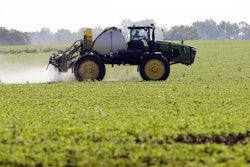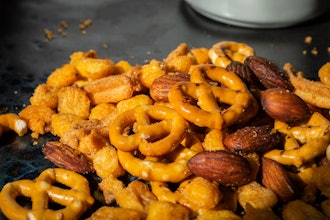NEW ORLEANS (AP) — Good weather over the next several weeks could do a lot to reduce a preliminary estimate of $100 million in Louisiana crop damage from Hurricane Isaac, LSU AgCenter economist Kurt Guidry said Tuesday. Of course, bad weather would do the opposite.
Since several crops were thought likely to have near-record harvests before the storm, the state's agricultural sector could still have a good year if skies stay blue, Guidry said. The preliminary figure is less than damage from last year's drought or from other storms in recent years, and less than farmers feared, he said. Which isn't to say that all damage was light. Some farmers lost entire crops.
The biggest estimated money losses are in sugarcane, one of Louisiana's biggest crops. About 380,000 acres — 90 percent of the total planted — were damaged. Although the estimated percentage loss from pre-storm value was 7 percent, that works out to nearly $60 million.
Much of the cane was laid flat by Isaac's winds and rains.
"It's probably never going to get straight as it was prior to the storm. But with sunny weather and dry conditions, our production specialists say it will start trying to grow back toward straight up," Guidry said. "And the impact in that situation should be relatively limited."
Some of the estimated damage is loss in yield, and some is in planting loss. Even great weather probably won't do much to change estimated planting losses, Guidry said.
Farmers had planted seed cane — laying the canes in furrows and covering them over — on about half the likely 100,000 to 110,000 acres to be planted this year, Guidry said. If seed cane is straight and tall, he said, each acre of cane can plant 5 to 8 acres of land but crooked canes must be cut up for "billet planting," which reduces an acre of seed cane to as little as 3 planted acres.
A $4 million loss is expected in rice, another major crop. The storm damaged about 38,000 of the estimated 400,000 acres planted, and is expected to cut about 11 percent of the yield on those damaged acres, Guidry said. He said most rice had been harvested in the south, and lower wind and rain in north Louisiana meant less damage to unharvested fields there.
Guidry estimated total dollar losses on vegetables, citrus and pecans together at about $8 million.
About 37 percent of the citrus crop was damaged in Plaquemines, Lafourche and Terrebonne parishes, which together produce about half the state's citrus fruits, he said. And there could be more lasting damage, because some orchards were flooded for days. It will take a while to learn whether those trees survive, he said.
About half the state's pecan acreage was hit, and those acres lost nearly one-quarter of their growing nuts — but that's more likely to be a one-year loss because the trees themselves didn't appear to be damaged, Guidry said.
He said about 70 percent of the state's expected cotton acreage was hit, and those fields are expected to see a 9 percent loss in yield and an $11 million economic loss, he said.
Farmers had planted about 1.14 million acres of soybeans. About 390,000 acres were damaged, with an expected 5 percent loss in yield — or about $14 million — on those acres. The worst-hit areas were in the southeast, where soybeans had been planted on fallow sugarcane fields and about half the crop was lost, Guidry said.
The 6,800 acres of damaged soybeans made up about 62 percent of the estimated acreage, but most were in the north, meaning relatively low impact, Guidry said. Those acres are expected to see about a 5 percent loss in yield, or about $1.6 million lost.
Although Isaac damaged only about 300 acres of vegetables — perhaps 3 percent of the total planted — those fields were slammed. About 250 to 260 acres were a total loss and losses averaging 85 percent reported on another 40 or 50 acres, Guidry said.
"Tangipahoa — one of our larger commercial vegetable production parishes — was hit pretty significantly," he said, as were fields in other southeastern parishes.






















